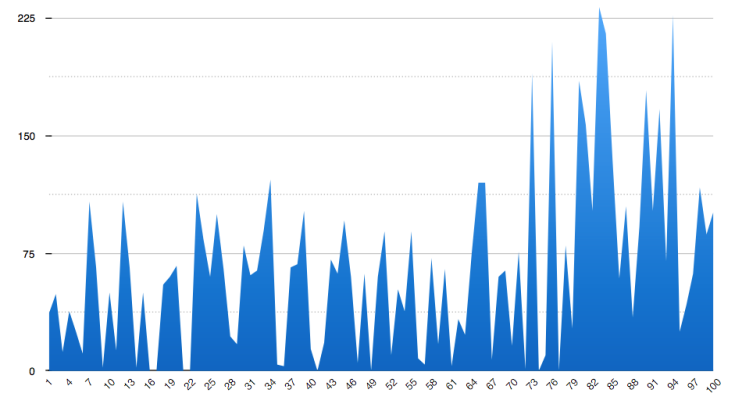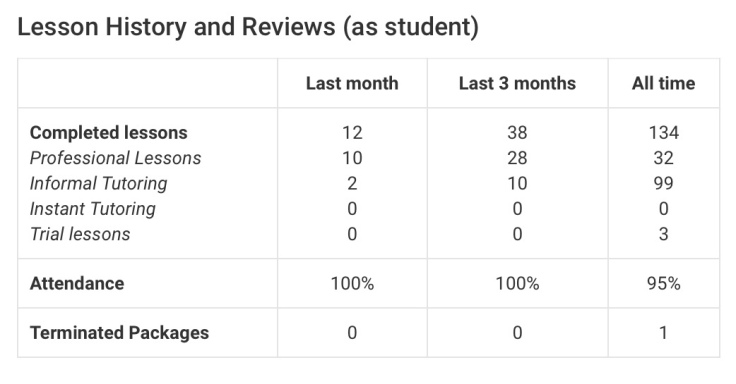I finished up the 100 days of Chinese Challenge at the end of April just as I was moving back to New York. The whole thing was one of the best experiences for my Chinese studies. The final stats say quite a lot.

Total: 107.4 hours
Daily average: 64 minutes
- Speaking: 44.3 h
- Reading: 28.8 h
- Listening: 11.2 h
- Writing: 23.1 h
- Skritter: 14 h
-
- New Characters: 121
- New Words: 272
Just to put the stats into perspective, according to the Foreign Service Institute (FSI) it takes around 2,200 hours to reach fluency* in Chinese for English native speakers. This means that if I had studied at this pace from the beginning it would have taken me around 2.2 years to achieve fluency. I’ve been studying Chinese for 8 years and I would consider myself fluent in many aspects. These stats tell me I haven’t been studying at peak potential.
Key Takeaway: Track, track track
This might seem a bit obvious, but honestly, I think the real takeaway of this challenge for me is: Track your language learning.
Tracking let me see how much I was actually studying and allowed me to make impactful adjustments to my studying strategies. I was able to focus on different areas and eventually structure my studies around focused learning, so that every couple of weeks I’d focus on the weakest area or the area I was spending less time on (first was writing, then reading). This in turn gave each of my classes with my tutors a structure and focus that they didn’t have before.

Taking on this kind of long challenge made me explore different kind of study methods and materials because I was committed to increasing my daily average. It made me aware that I had to have more material at hand if I was to take advantage of my time. I searched for more podcasts at different levels, found apps to increase extensive reading, and printed out some materials so I wouldn’t be using my phone, iPad or computer all the time. In the end, I began to generate a lot of my own material in the form of notes, transcriptions, and translations.
I also told you guys that I got a couple of job inquiries as to Chinese-Spanish and Chinese-English interpretation. I was almost at the end of this challenge when they came in. Up until then I had never allowed myself to dream of such a thing. Then, I remembered how scared I was 8 years ago to do my first Spanish-English translation, when my Spanish was very near the level my Chinese is now, and how far I had come since then.
Having formed a strong habit and structured way of studying during this challenge allowed me to see these jobs as a possibility. I thought, “I know how to get to the level I need and I know I can get there.”
Final thoughts
When I first started this challenge, I was studying Chinese an average of 30 to 40 minutes every day. A big part of that time was classes with my teachers on italki and studying the vocabulary I learned with them, with the sporadic reading of news and listening to podcasts.

Now, a typical day for me could be anywhere from 1 to 3 hours of studying. And my lazy days are the equivalent of my best days before the challenge. Here is what one of my average days looks like:
- 6:50 – 7:00 Transcription of video
- 7:00 – 8:18 Class on italki
- 8:18 – 8:34 Breakfast while listening to Jenny告诉你 podcast
- 8:34 – 8:54 Light cleaning while listening to Jenny告诉你 podcast
- 9:03 – 9:20 Reading a newspaper article in traditional characters
- 10:55 – 11:03 Chatting in Chinese using Weixin
- 11:32 – 11:45 Listening to 新闻酸菜馆 podcast
- 12:26 – 12:50 Lunch while listening to podcast
Once you stick with something long enough you create a habit!
So, persistence is really key.
*I’m not sure what they consider to be fluency, but I’ve taken the ALTA exam for level 3 in both Chinese and Spanish and a DLPT mock exam for Chinese and I’d say this kind of fluency is a highly functional B2 in the European Framework, with a high emphasis on understanding and producing both very colloquial and formal language.




Leave a comment